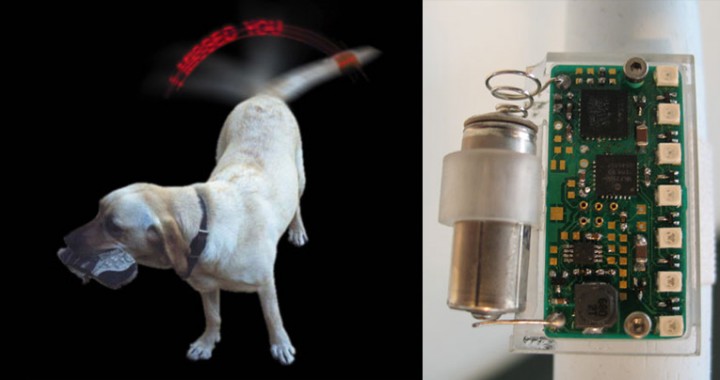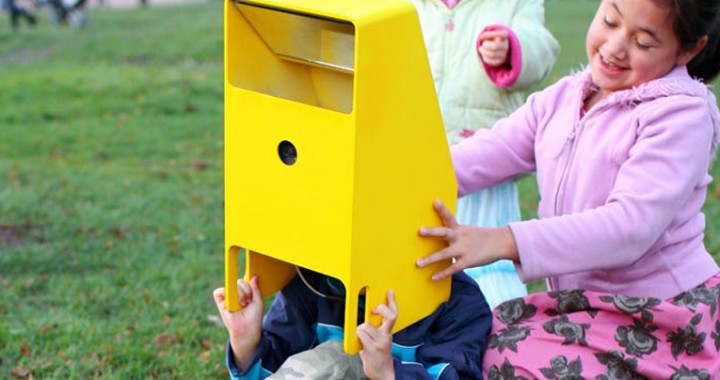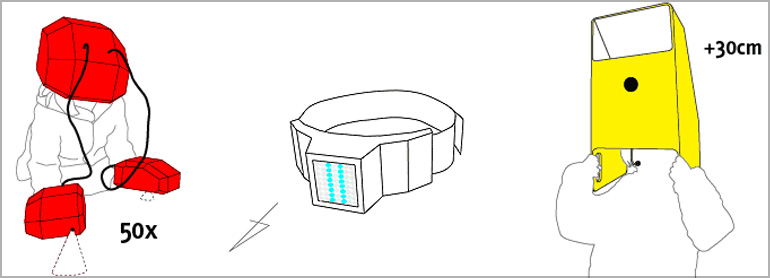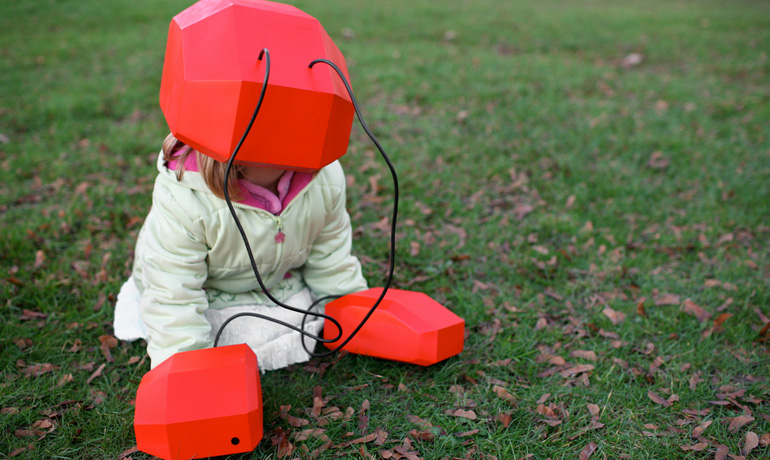Augmented Animal, 2001
Auger and Loizeau imagine technologies that assist squirrels in finding food, protect rodents from predators, and help dogs adapt to the restrictions of domestic life. In one scenario, a dog’s tail communicates her emotional state with the help of LED text. Phrases like “I’d like my dinner” or “I really love you” appear when the dog wags her tail. In another scenario, a squirrel records the GPS location of a buried nut using a device attached to his wrist. When he needs to retrieve the nut, a red light flashes on the wrist device indicating the exact location of his stash. A third scenario gives night vision goggles to a rodent, helping her avoid predators who hunt in low light.1
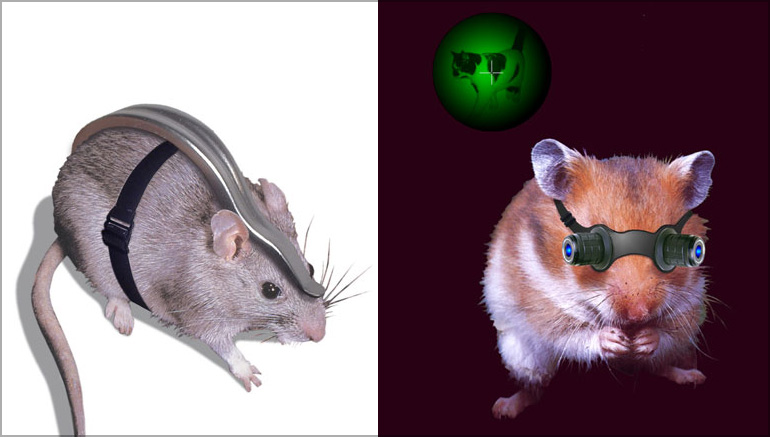
See Auger’s website.
1 Paola Antonelli, ed., Design and the Elastic Mind (New York: The Museum of Modern Art, 2008), 35.
